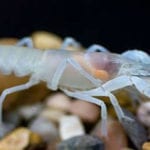 Crime
Crime  Crime
Crime  Technology
Technology 10 Hilariously Over-Engineered Solutions to Simple Problems
 Miscellaneous
Miscellaneous 10 Ironic News Stories Straight out of an Alanis Morissette Song
 Politics
Politics 10 Lesser-Known Far-Right Groups of the 21st Century
 History
History Ten Revealing Facts about Daily Domestic Life in the Old West
 Weird Stuff
Weird Stuff 10 Everyday Products Surprisingly Made by Inmates
 Movies and TV
Movies and TV 10 Actors Dragged out of Retirement for One Key Role
 Creepy
Creepy 10 Lesser-Known Shapeshifter Legends from Around the World
 Animals
Animals 10 Amazing Animal Tales from the Ancient World
 Gaming
Gaming 10 Game Characters Everyone Hated Playing
 Crime
Crime 10 Terrifying Serial Killers from Centuries Ago
 Technology
Technology 10 Hilariously Over-Engineered Solutions to Simple Problems
 Miscellaneous
Miscellaneous 10 Ironic News Stories Straight out of an Alanis Morissette Song
Who's Behind Listverse?

Jamie Frater
Head Editor
Jamie founded Listverse due to an insatiable desire to share fascinating, obscure, and bizarre facts. He has been a guest speaker on numerous national radio and television stations and is a five time published author.
More About Us Politics
Politics 10 Lesser-Known Far-Right Groups of the 21st Century
 History
History Ten Revealing Facts about Daily Domestic Life in the Old West
 Weird Stuff
Weird Stuff 10 Everyday Products Surprisingly Made by Inmates
 Movies and TV
Movies and TV 10 Actors Dragged out of Retirement for One Key Role
 Creepy
Creepy 10 Lesser-Known Shapeshifter Legends from Around the World
 Animals
Animals 10 Amazing Animal Tales from the Ancient World
 Gaming
Gaming 10 Game Characters Everyone Hated Playing
10 Genetically Modified Animals Not Intended For Consumption
The whole debate about the advantages versus the dangers of genetically modified (GM) animals is always concentrated on the ones created for food. No one seems to notice that other animals are also being genetically modified.
These cases can be even more contentious. Some people feel that it is unethical to experiment with animals in this way. For example, they can be injured or killed during these trials. It is also possible that the environment could be irreparably harmed.
10 Japanese Scientists Created A Chicken That Lays Eggs That Fight Cancer
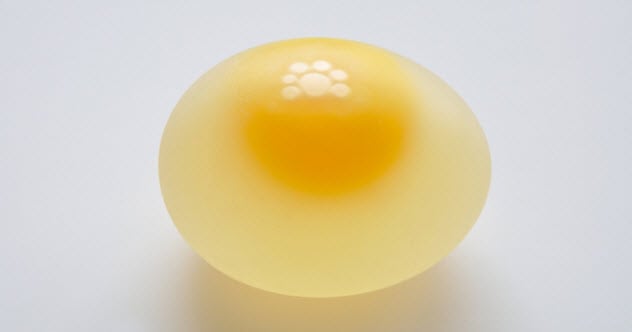
Japanese scientists have created a GM chicken that lays golden eggs. Although the eggs are not actually golden, they are worth their weight in gold, if not more. They contain high amounts of interferon beta, a protein that fights cancer, hepatitis, and multiple sclerosis.
To create the eggs, researchers from the Biomedical Research Institute of the National Institute of Advanced Industrial Science and Technology first added interferon beta to the cells of unborn cockerels. After the scientists reinserted the cells into the appropriate embryos, the cocks were mated with the hens. Then the cycle was repeated. Two generations later, the hens were laying eggs rich in interferon beta.
This protein is found in the egg whites, which have a cloudier look than normal. The cost of each egg is between $535,995 and $2.6 million.[1]
9 Scientists Create GM Ants To Understand Why Ants Are Social
Individual ants are difficult to genetically modify. Their eggs are more sensitive and must be nurtured by worker ants to survive. Ironically, this problem is the same reason why scientists are keen on genetically modifying ants: to better understand their social behavior. How these insects maintain such a high level of cooperation has always puzzled researchers.
So the scientists persevered with their experiments and found the answer. Ants cooperate because of their sense of smell. Any ant that cannot smell or has a mutated smell gland will not be orderly, social, or cooperative.
Biologists from The Rockefeller University chose the clonal raider ant (Ooceraea biroi) for their tests. Unlike other insects, clonal raider ants do not have queens. Instead, each ant lays an egg, which is essentially a clone of itself. This was another plus for the researchers because a GM ant will always lay a GM egg.
The scientists altered a gene that worked with a nerve that allows the ants to detect smells with their antennae. After 10,000 tries, the researchers were able to create ants that were born with a poor sense of smell. These ants refused to follow the trails of other ants and just kept running around.[2]
8 Chinese Scientists Have Created Extra-Muscular Dogs

Some Chinese researchers have created GM beagles that are stronger, faster, and more muscular than regular beagles. According to the scientists, these dogs will make excellent hunting companions and could be used as police or military dogs.
The researchers were able to create the muscular dogs by knocking out the myostatin gene. This mutation naturally occurs in some dogs like the whippet. In fact, the world’s strongest and most muscular dog, Wendy, is a whippet. Scientists have also edited out the gene in other animals like mice. In that case, they produced stronger and more muscular creatures called “mighty mice.”[3]
The researchers say that their plan was not to create muscular dogs. They simply wanted to test their ability to genetically modify these animals so that they can produce dogs with human ailments like Parkinson’s disease and muscular dystrophy. The scientists believe that this will allow us to understand how these diseases occur in humans.
7 Scientists Are Creating GM Mosquitoes To Kill Other Mosquitoes
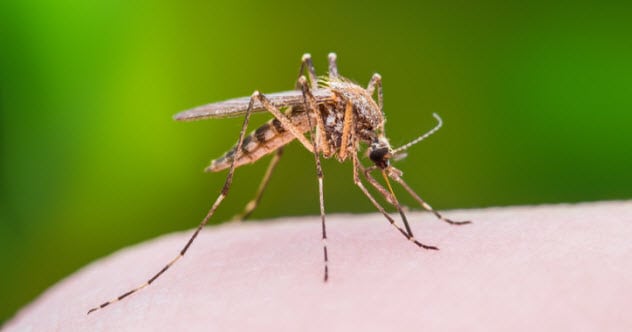
British-based Oxitec has created GM male mosquitoes that pass some deadly genes into the females during reproduction. The gene will evidently lead to the death of the larva. This will decimate mosquito populations and limit the spread of mosquito-borne diseases.
For now, Oxitec targets the mosquitoes that transmit dengue fever. They did not select mosquitoes that carry malaria because that disease is transmitted by several species of mosquito. In contrast, dengue fever is only transmitted by one subspecies, making it easier to work with.
Oxitec released its first mosquitoes in the Cayman Islands in 2009 before going to Malaysia and Brazil. The Brazilian government has even built breeding facilities where millions of these insects are produced. Environmentalists have protested the release of the GM mosquitoes due to concerns that they could have nasty unintended consequences.
Ultimately, Oxitec plans to bring its mosquitoes to the United States. The company planned a test run in the Florida Keys, but they hit a brick wall when residents protested. Key West even passed an ordinance forbidding the release of the mosquitoes until they confirmed how the insects would affect the environment.
Meanwhile, Oxitec has applied for a patent and filed a request with the Food and Drug Administration to allow the release of its mosquitoes in the US.[4]
6 Scientists Created A Glow-In-The-Dark Cat To Find A Cure For HIV
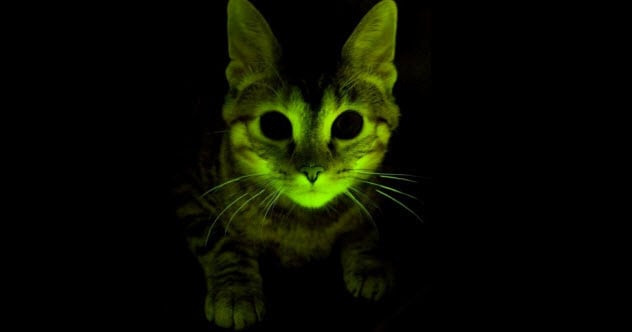
The thought of having a pet cat that glows in the dark might seem cool, but scientists decided to create these animals to end AIDS in humans. Cats were chosen because they suffer from feline immunodeficiency virus (FIV), which is basically the cat version of HIV.
FIV and HIV act in similar ways. Both cause the body to lose T cells, which fight infections. Once the T cells are gone, the person or cat is infected with different opportunistic diseases. Like HIV, FIV also leads to AIDS (FIV/AIDS) and, consequently, death if not properly managed.
During earlier research into HIV, scientists discovered a protein in the rhesus monkey that stops the HIV and FIV viruses. However, researchers needed to use a complicated genetic modification method—that might or might not work—to inject the protein into cats. This is why they added the glow-in-the-dark genes from a jellyfish. A cat glowing in the dark is a sign that the gene modification worked.
While the scientists are focused on ending HIV in humans, cats may also benefit from the tests because they could eradicate FIV in cats. Million of cats die of AIDS every year.[5]
5 Canadian Scientists Are Creating Winter And Disease-Resistant Bees
 Bees are crucial to Canada’s economy. They pollinate hundreds of native plants and crops. Bees also provide honey and beeswax. However, the nation is facing a shortage of these insects due to harsh winters and the incursion of Varroa mites, which are spreading diseases to the bees. It is estimated that one-fourth of all bees in Canada die every year.
Bees are crucial to Canada’s economy. They pollinate hundreds of native plants and crops. Bees also provide honey and beeswax. However, the nation is facing a shortage of these insects due to harsh winters and the incursion of Varroa mites, which are spreading diseases to the bees. It is estimated that one-fourth of all bees in Canada die every year.
This has left Canadian farmers importing bees from the United States. However, there are fears that someone will soon import the aggressive Africanized “killer” bees into Canada. To deal with these problems, some researchers at the University of British Columbia plan to create GM bees that are immune to diseases and can tolerate the extreme cold.[6]
4 Scientists Are Creating GM Monkeys To Better Understand Human Mental Disorders
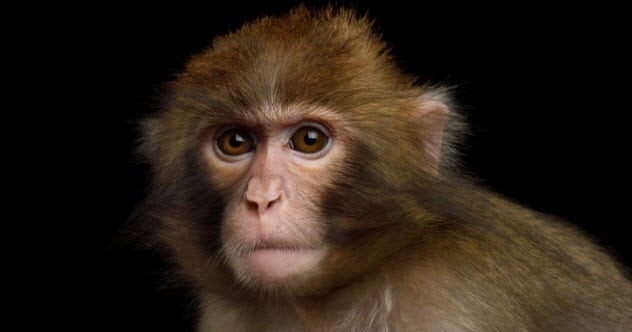
For research purposes, scientists are working on creating GM monkeys with autism and schizophrenia. Marmosets and macaques are the animals of choice because chimpanzees are bigger and more difficult to work with.
Also, chimpanzees used for research must be taken to expensive sanctuaries after the experiments are over. Other animals are typically euthanized after testing has concluded.
At the forefront of the GM monkey experiment is Guoping Feng, the head of neuroscience at the Massachusetts Institute of Technology. He is using a new genetic modification technology called CRISPR to create his monkeys.[7]
Feng frequently needs to travel to China to conduct his experiments. In the US, it would cost more money and attract the attention of animal right groups.
3 Scientists Created A Beetle With A Working Third Eye
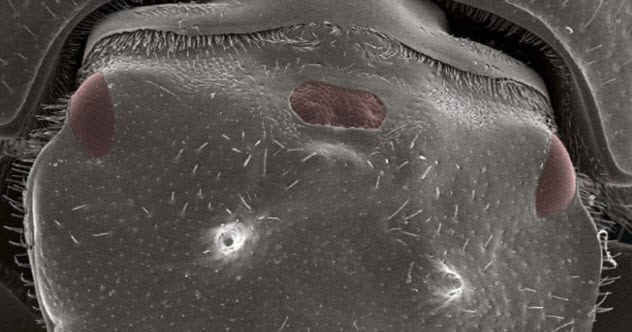
Researchers at Indiana University have created a beetle with three eyes. And yes, the third eye works. This study was a follow-up to an earlier gene experiment where researchers unexpectedly created a mutant beetle with three eyes. The eye is located in the middle of the head between the original two eyes.
Initially, the scientists had deactivated one of the genes that formed the head of the beetle. As a result, the beetle lost its horns and developed an extra eye. This was surprising because complicated body parts like the eyes, brain, wings, and shells are usually formed by the action of several genes.
The second study was a deliberate attempt to make two types of scarab beetle lose their horns and grow an extra eye. After genetic modification, the insects either developed smaller horns or no horns at all. However, they all had an extra eye, which was formed by the merger of two smaller eyes in the middle of the forehead.[8]
Scientists believe that this experiment will allow us to understand how organs form and work as part of the body. These techniques might also be used to grow artificial organs in the lab.
2 Vietnamese Scientists Have Created Golden Seahorses
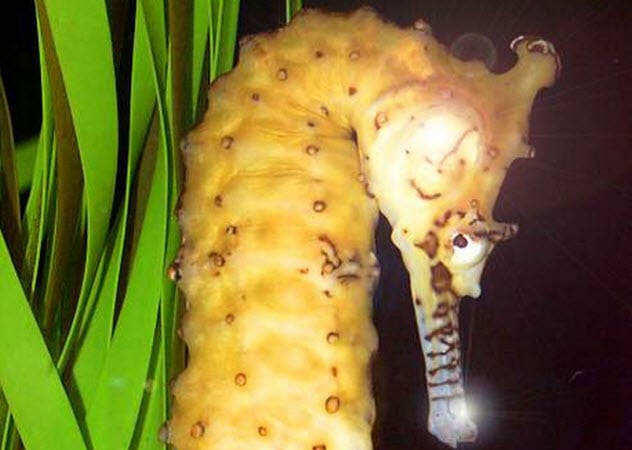
Researchers at Vietnam National University’s College of Science created a golden seahorse, the country’s first GM animal. The scientists developed the seahorse to test a gene-shooting method invented by Phan Kim Ngoc, the team leader. He had been working on the technology for three years. His 20 earlier attempts had ended in failure.
The team had used other animals, but seahorses were the best. To create the seahorses, they extracted the GFP gene from jellyfish and mixed it with gold. Then the scientists injected the solution into seahorse eggs. The result was 108 seahorses that glittered like gold.
According to the researchers, this technology could be used to create improved GM animals for food. The scientists also believe that their technique could be useful in replacing negative genes with positive ones in humans. Meanwhile, the team has moved on to altering mice cells to create insulin that could be used by people suffering from diabetes.[9]
1 Chinese Scientists Created A Micro Pig As A By-Product Of A Study
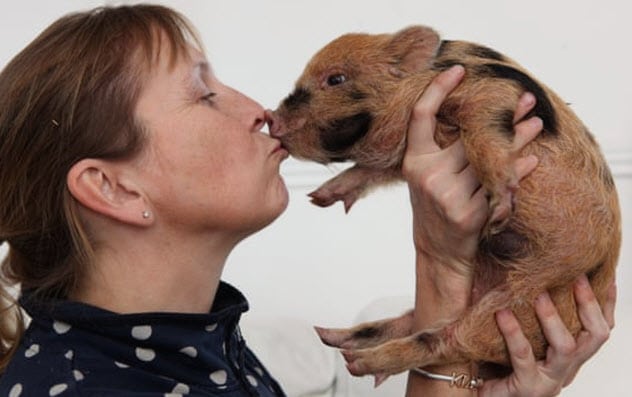
Researchers at Beijing Genomics Institute raised eyebrows when they used gene-editing techniques to create micro pigs for sale as pets. To be clear, micro pigs are not a new development. They have been around for years, although the original ones were not genetically modified.
Initially, regular pigs were inbred and underfed. Most of the time, sellers passed off piglets as adults to deceive buyers. Months later, the buyers usually ended up with oversized pigs that they abandoned in shelters. There, the animals were euthanized.
The Chinese researchers using gene modification didn’t intend to create small pigs as pets. They developed the pigs for use in experiments, notably stem cell research. However, they considered selling some of the pigs to raise money for their experiments. The institute plans to sell each micro pig for 10,000 yuan.
The proposed sale has created two camps. Supporters say that genetic modification is better than the breeding and starvation method used to create regular micro pigs. The opposition is concerned that genetic modification could be painful to the pigs and have unintended consequences.[10]
Read more bizarre, if not unreal, stories about genetically modified organisms on Top 10 Bizarre Genetically Modified Organisms and 10 Genetically Modified Animals You Can Buy.

